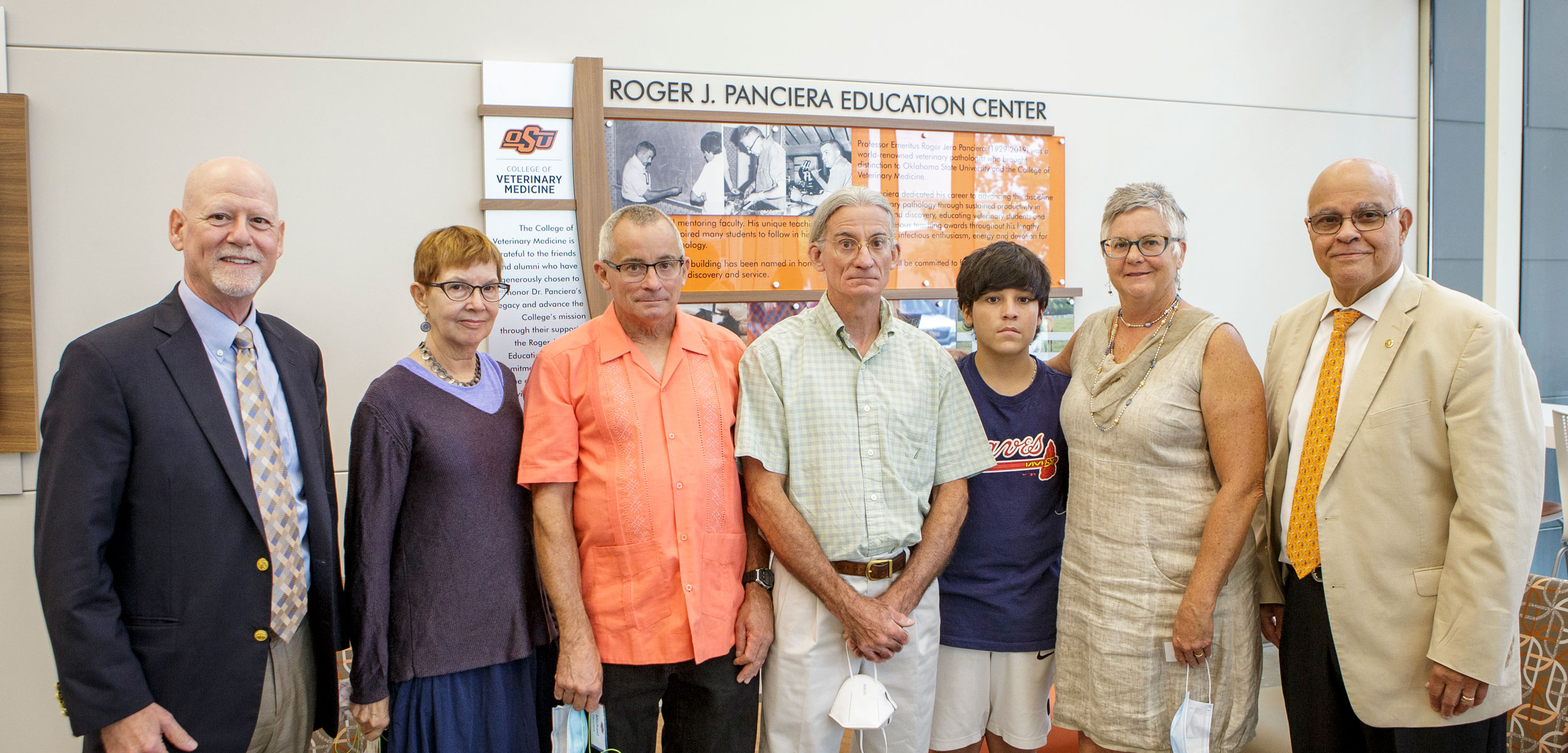
OSU Vet Med dedicates a building and launches new, improved teaching methods
Monday, August 16, 2021
Students at Oklahoma State University’s College of Veterinary Medicine recently moved into a state-of-the-art building, the Roger J. Panciera Education Center.
The college’s Aug. 13 dedication for the building both honored its namesake, Dr. Roger Panciera, and launched a new, improved way to teach veterinary students at OSU.
The Panciera building features the latest technology, natural light and high ceilings for a feeling of space as well as mobile furniture to allow for countless configurations. For the first time in the history of the college, classes in years one through three will be housed in one building on one floor to help break down barriers between classes and allow third-year students a greater opportunity to mentor first- and second-year students.
Each classroom features monitors on all four walls to allow students to see, no matter how seats are arranged. Each room also features one large screen in case instructors need a forward-facing type of presentation. Classrooms are open all the time. One room is designated as a “quiet room” for those who like to study in a quiet area. Two more rooms are available for students to configure anyway they like. All rooms have numerous white boards and furniture on wheels for easy movement.
Many tiny microphones are located in the ceilings to make sure any question asked is picked up — not just the instructor’s answer — for the recorded lecture. This means any student who misses a class can still hear all that was said. Students can bring a plug-in device to project something to their study group, or an instructor can have two inputs into the monitor. This allows the main slide to remain on one monitor while, for example, a demonstration video is shown on another.
“As an instructor, it’s a great feeling when you are able to walk among the students and see them eye to eye, show them something and converse with them without barriers like standing behind a big podium,” said Dr. Margi Gilmour, associate dean of academic affairs. “You are moving and talking and engaging students in the discussion. Team teaching has been shown to be very effective. We can have students in groups of six, eight or whatever works best for the subject and instructor. This is great for case studies where students work together and then come back as a whole to discuss the case and what each group discovered. This leads to a better learning experience.”
Students had input in the design of the building as well.
“Students were given three options of chairs to select from. They voted and that’s the style of chair we purchased so they had a voice in what they would sit in,” Gilmour said. “The high ceilings, natural light and carpeted rooms are visibly appealing and make it a nice place to be in.
“Medical education is evolving. We have competencies we test for to make sure students have the knowledge they need. We are instilling in them a sense of collaboration. It’s not just anatomy and physiology; it’s learning teamwork and collaboration not just during their fourth-year clinical rotations but from their very first day of class. That’s a shift in how we teach, how we train and buildings like the Roger J. Panciera Education Center support that.”
The building honors the late Panciera (OSU CVM ’53), professor emeritus and a world-renowned veterinary pathologist. He spent his entire career at OSU teaching veterinary students, doing ground-breaking research and performing diagnostics to find answers to questions. His leadership advanced the discipline of veterinary pathology and inspired generations of veterinarians to enter the field of veterinary pathology.
“The new classroom will be a testimony to Dr. Panciera’s distinction as an outstanding educator and mentor of veterinary students and have a transformational change in how we educate the next generation of veterinarians," said Dr. Carlos Risco, dean of the OSU College of Veterinary Medicine.
The building was funded by OSU administration and countless donors and alumni whose lives were positively impacted by Panciera.
Photos and video excerpts available at https://flic.kr/s/aHsmWqKF88.
Rebroadcast of the entire dedication available at Panciera Education Center Dedication (Full Ceremony).
